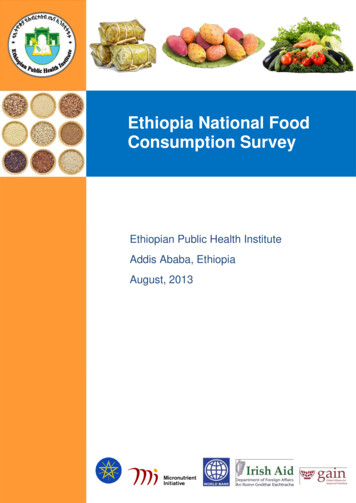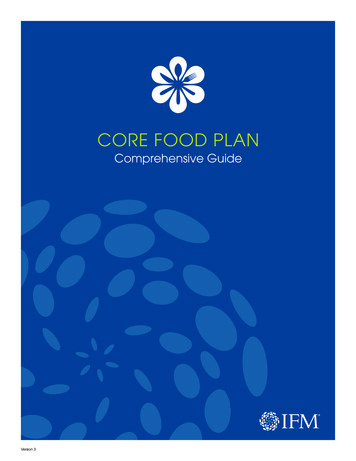
Transcription
CORE FOOD PLANComprehensive GuideVersion 3
Table of ContentsWhy the Core Food Plan?. 3Features of the Core Food Plan. 4Touring Through the Food Plan. 8Frequently Asked Questions. 18Resources and Tools for Success. 26 2016 The Institute for Functional Medicine
Why the Core Food Plan?The Core Food Plan (CFP) is designed for those who are interested in:nCore principles of healthy eatingnHealth maintenancenDisease preventionnAwareness of one’s relationship with foodThe CFP is a first step towards healthier eating and is designed to encourage eating in a way that will nourish andenergize the body. It is based on current research on what and how people should eat in order to live long, healthylives. It takes elements from the Mediterranean diet and the hunter-gatherer approach (sometimes referred to as the“Paleo” diet), and encourages eating low-glycemic carbohydrates.This food plan can be easily changed to suit personal preferences and health needs. It is available with vegetarianand vegan modifications, and can accommodate foods from virtually any culture. This Comprehensive Guideprovides tools and information that will make it easy to tailor the food plan based on individual needs. In additionto plan details, this guide answers many questions that might arise when beginning a new food plan.We call this a “core” food plan because it lays the foundations for eating well that will carry an individualthroughout life. The CFP uses the basic principles of “food as medicine” to support an individual’s health goals andimprove his or her relationship with food.IFMnCore Food Plan Comprehensive Guide 2016 The Institute for Functional Medicine3
Features of the Core Food PlanThis food plan was created by a team of Functional Medicine physicians and nutrition professionals to helpindividuals learn to eat a balance of healthy, whole foods that support optimum health.nThis plan starts individuals on a journey tobetter health. It allows people to meet daily needs for the macronutrients:protein, fats, and carbohydrates. It also supplies all the necessary minerals,vitamins, and phytonutrients, along with adequate fiber and fluids. On thisplan, individuals can choose from a wide variety of high-quality foods toincorporate into meals each day. Healthy snacking is encouraged.Foundational eating plan:The CFP is appropriate for children, adults of all ages, and pregnantwomen. The plan can also be easily adapted for meat eaters, vegetarians,and vegans alike. It can also be modified to meet the needs of athletes,achieve weight loss or gain, control blood pressure, and exclude dairy,gluten, or any foods to which one is allergic, intolerant, or sensitive. Foodsare grouped into categories. In some cases, a practitioner may recommenda number of servings to consume from each category every day. Thenumber of meals and snacks may be changed each day to help distribute the allotment offood in a way that best meets individual needs.nFocus on whole foods: Whole, plant-based foods are an important source of fiber andphytonutrients. Dietary fiber is critical for proper health and digestion. Fiber binds totoxins and excess hormones and helps the body excrete them. Fiber is also the preferredfood of the cells that line the digestive tract. Phytonutrients are plant-based compoundswith a wide range of antioxidant and anti-inflammatory health benefits. Thesecompounds give fruits and vegetables their deep hues, and phytonutrient-rich foods canoften be identified by their color. (For example, the phytonutrient beta-carotene is foundin yellow-orange foods like carrots, winter squash, cantaloupe, and papapa.)nPromotes clean and organic: Eating “clean” foodIFMhelps to reduce toxinexposure. Our food supply has become compromised by the additionof artificial colorings, flavorings, additives, and preservatives. Pesticides,insecticides, and herbicides are also found in conventionally-grown(non-organic) produce, whole grains, nuts, seeds, and legumes. One ofthe biggest nutritional problems is the amount of synthetic sweetenersin highly processed foods. Eating a “clean” diet—avoiding non-organic,processed foods—can increase the liver’s ability to eliminate toxins andlower the toxic burden in the body. For these reasons, the CFP promoteseating organic foods.nCore Food Plan Comprehensive Guide 2016 The Institute for Functional Medicine4
Features of the Core Food PlannProtein is necessary to repair cells and makenew ones, support muscle growth, maintain lean muscle mass, andstabilize blood sugar and insulin levels (which also helps to controlhunger). Every cell in the human body contains proteins: they are thebuilding blocks of life. Choices for protein on the CFP are moderatelylean and include both animal and plant foods. Choosing protein fromgrass-fed and free-range animals and poultry is encouraged for omnivores.Such “clean” protein is not just lower in toxins but also higher in omega-3 fatty acids than isprotein from corn-fed and caged animals and poultry. Given its vital role in bodily functions,protein should be included with every meal and snack.nBalancing dietary fat intake is a first-line approach tominimizing inflammation in the body. Anti-inflammatory strategies include thefollowing: (1) eliminate trans fats (typically found in processed foods); (2) decreaseintake of saturated fats and omega-6 fats from animal sources; and (3) increaseintake of omega-3–rich fats from fish and plant sources. Dietary fats and oils playa significant role in the risk of many chronic diseases. The emphasis on fat-freefoods in the latter part of the 20th century led only to weight gain, because thefat in processed products was replaced with refined sugar. Refined sugars alsoconvert to body fat and can increase levels of blood fats called triglycerides.Adequate quality protein:Balanced quality fats:Our general guideline is that it is better to replace saturated fat with unsaturated(liquid) fats rather than with refined carbohydrates. There are many types ofsaturated fats, and they have different effects on the body. In the CFP, healthysources of saturated fat have been included, such as coconut oil and butter fromgrass-fed cows. Anti-inflammatory fats from foods like fish, leafy greens, nuts,certain oils, and seeds are also featured in the CFP.nThe average individual living in a Western country who eats mostlyprocessed food gets only about one-third of the fiber they need every day. Eating thewhole, unprocessed foods listed in the CFP will provide the body with more dietaryfiber. Fiber is found in plant-based foods like whole grains, nuts, legumes, vegetables,and fruits. It is a form of carbohydrate that the body doesn’t digest, so consuming itmakes the body feel more full without eating a lot of additional calories.High in fiber:There are two types of dietary fiber, each with different benefits. Insoluble fiber canbe found in the bran (outer coat) of vegetables and whole grains. This type of fiberacts like a bulky “inner broom,” sweeping out debris from the intestine and helpingthe intestines move food along. The other type of fiber, called soluble fiber, attractswater and swells, creating a gel-like mass that slows down digestion. The gel helps traptoxins and other undesirable substances (including cholesterol and other dietary fats)so that the body can excrete them. It also provides “food” for healthy bacteria in the digestive tract.Soluble fiber is found in foods like oat bran, barley, nuts, seeds, beans, lentils, peas, and some fruits andvegetables. It is also found in supplements that contain psyllium. Individuals should aim to consumeat least 5 grams of fiber per serving of food, or a total of 25 to 35 grams of dietary fiber per day.IFMnCore Food Plan Comprehensive Guide 2016 The Institute for Functional Medicine5
Features of the Core Food PlannSugars contribute a significant portion of calories to theAmerican diet, particularly through sugar-sweetened beverages, refined grains, anddesserts. Added sweeteners are also present in processed foods such as salad dressings,frozen meals, soups, and condiments. Sodas, fruit drinks, tea and coffee whensweeteners are added, energy/sports drinks, and flavored milks are sources of emptycalories. The result of all these added sweeteners has been a substantial increase in theincidence of type 2 diabetes (T2D) in younger people, laying the groundwork forobesity and the development of heart disease.Low in simple sugars:The CFP limits added sweeteners to help reduce cravings for more sweets. Removingsweeteners also helps to minimize inflammation and prevent dramatic surges in bloodsugar and insulin, helping to stabilize blood sugar levels. Sweeteners do not all havethe same effect on the body. Some have a very gentle effect (low glycemic), whileothers lead to cravings (higher glycemic). With this in mind, no more than 1 to 3teaspoons of the following lower glycemic sweeteners should be used daily: barley malt, brown ricesyrup, blackstrap molasses, maple syrup, raw honey, coconut sugar, agave, lo han, fruit juice concentrate,and erythritol. Stevia is also well tolerated by most people, but it is a high-intensity herbal sweetenerthat requires no more than a pinch for maximum sweetness. Overall, most sweeteners perpetuate aneed for sweet-tasting food and make it difficult to enjoy the natural sweetness in all fruits and certainvegetables. Thus, approved sweeteners should be enjoyed in moderation.Label reading is necessary to detect added sugars. Natural and artificial sweeteners to be avoidedappear on food labels as different names, including the following: aspartame, brown sugar, cane sugar,caramel, confectioner’s sugar, corn syrup, corn syrup solids, date sugar, Demerara sugar, dextrose,evaporated cane juice, fructose, fructose syrup, glucose, high fructose corn syrup, invert sugar,NutraSweet , maltitol, maltodextrin, maltose, mannitol, sorbitol, Splenda , sucrose, and turbinadosugar. Eating whole foods should be the focus when following the IFM Core Food Plan; removingprocessed foods reduces the worry about exposure to added sugars and will make the naturalsweetness of a low-glycemic piece of fruit more enjoyable.nIFMPlant (“phyto”) foods contain thousands of compounds that communicatewith the cells in the body and change how it functions. At this time, about 10,000 of thesecompounds have been identified, but many thousands of others haven't yet been fully identified orclassified. We may eat only a small amount of some every day, yet they can have dramatic effects inthe body. Several of them—like the bitter compounds in arugula and other green leafy vegetables,the resveratrol in grapes and red wine, and the astringent compounds in green tea—appear to bebeneficial for health. Some phytonutrients may help regulate blood sugar,lower LDL cholesterol, and get blood pressure back into a healthier range.Colorful plant foods should be included in each meal and snack to makeeating more appealing; while providing the body with an abundance ofcritical nutrients and phytonutrients. The CFP encourages eating a variety ofphytonutrient-rich fruits and vegetables every day by challenging individualsto eat six different colors of plant foods daily (red, orange, yellow, green, bluepurple, and tan/white).Phytonutrient diversity:nCore Food Plan Comprehensive Guide 2016 The Institute for Functional Medicine6
Features of the Core Food PlanIFMnCore Food Plan Comprehensive Guide 2016 The Institute for Functional Medicine7
FrequentlyTouringThroughAskedtheQuestionsFood PlanThe CFP is a whole-foods way of eating that allows for balanced meals. The food list provides a “snapshot” ofhealthy foods to choose every day. It suits all eating styles, with vegetarian or vegan options. Additionally, healthcareproviders may make other recommendations based on an individual’s specific dietary needs.This section of the Comprehensive Guide is organized by category of food. In some cases, healthcare providersmay choose to recommend daily calorie amounts for an individual based on his or her age, gender, size, and activitylevel. These amounts can be met by selecting specific foods within each of the different categories each day. Caloriecounting is usually only needed initially to help individuals understand portion sizes and learn how to balancechoices of protein, fat, and carbohydrate-rich foods. As one becomes more practiced in following the CFP, thequality of foods—rather than calorie amounts—will become more of a priority. Once balancing quality protein, fat,and carbohydrates in meals becomes intuitive, there will be no need to count calories.VEGETABLES Non-starchyCore Food PlanPROTEINSProteinsServings/dayLean, free-range, grass-fed, organically grownanimal protein; non-GMO, organic plant protein;and wild-caught, low-mercury fish preferred.Animal Protein:Cheese (hard)–½ ozCheese (low-fat)–1 ozCottage cheese(low-fat)–¼ cFeta cheese(low-fat)–1 ozParmesan cheese–2 TRicotta cheese(low-fat)–¼ cEgg–1; or 2 egg whitesFish/Shellfish–1 ozMeat: Beef, buffalo,elk, lamb, venison,other wild game–1 ozPoultry (skinless):Chicken, Cornishhen, duck, pheasant,turkey, etc.–1 ozPlant Protein:Mung bean/Edamame pasta–1 ozNatto–1 ozNutritional yeast–2 TSpirulina–2 TTempeh–1 ozTofu (firm/extrafirm)–1½-2 ozTofu (soft/silken)–3 ozProtein Powder:Check label for# grams/scoop(1 protein serving 7 g)Egg, hemp, pea, rice,soy, wheyLEGUMESProteins/CarbsServings/dayOrganic, non-GMO preferredBean soups–¾ cBlack soybeans(cooked)–½ cDried beans, lentils,peas (cooked)–½ cVersion 11Refried beans,vegetarian–½ cVeggie burger(non-GMO)–1 pattyFATS & OILSFats1 serving 90–110 calories, 3–7 g protein, 0 fat, 15 g carbsServings/dayDAIRY & ALTERNATIVES Proteins/CarbsMinimally refined, cold pressed, organic,non-GMO preferredServings/dayUnsweetened, organic preferredDairy:Kefir (plain)–6-8 ozMilk: Cow, goat–8 ozYogurt, Greek(plain)–6 ozDairy Alternatives:Milk: Almond,coconut, flaxseed,hazelnut, hemp, oat,rice, soy–8 ozYogurt: Coconut, soy(cultured)–4-6 ozKefir: Coconut,soy–4-6 oz1 dairy serving 90–150 calories, 7–8 g protein, 12 g carbs1 dairy alternative serving 25–90 calories, 1–9 g protein,1–4 g carbs (nutritional values vary)NUTS & SEEDSProteins/FatsAvocado–2 T or⅛ wholeButter–1 t, 2 twhippedChocolate, dark(70% or highercocoa)–1 ozCoconut milk,regular (canned)–1½ TCoconut milk, light(canned)–3 TGhee/clarifiedbutter–1 tHalf and half–2 TMayonnaise(unsweetened)–1 tServings/dayUnsweetened, unsalted, organic preferred1 serving as listed 35–75 calories, 5–7 g protein, 3–5 gfat, 0–4 g carbsAverage protein serving is 3–4 oz (size of palm of hand).Edamame (cooked)–½cFlour, legume–¼ cGreen peas(cooked)–½ cHummus or otherbean dips–⅓ cCarbsServings/dayAlmonds–6Brazil nuts–2Cashews–6Chia seeds–1 TCoconut (dried)–3 TFlaxseed (ground)–2 THazelnuts–5Hemp seed–1 TMacadamias–2-3Nut and seedbutter–½ TPeanuts–10Pecan halves–4Pine nuts–1 TPistachios–16Pumpkin seeds–1 TSesame seeds–1 TSoy nuts–2 TSunflower seeds–1 TWalnut halves–4Oils, cooking:Avocado, butter,coconut (virgin),grapeseed, olive(extra virgin), ricebran, sesame–1 tOils, salad: Almond,avocado, canola,flaxseed, grapeseed,hempseed, olive(extra virgin),pumpkin seed,safflower (higholeic), sesame,sunflower (higholeic), walnut–1 tOlives: Black, green,kalamata–8Pesto (olive oil)–1 TSalad dressing madewith quality oils–1 T1 serving 45 calories, 5 g fatArtichokeArugulaAsparagusBamboo shootsBeets (cubed)Bok choyBroccoflowerBroccoliBrussels sproutsCabbageCarrotsCauliflowerCeleriac rootCeleryChard/Swiss chardChervilChivesCilantroCucumbersDaikon ables: Kimchi,pickles, sauerkraut,etc.GarlicGreen beansGreens: Beet, collard,dandelion, kale,mustard, turnip, etc.VEGETABLES eeksLettuce, allMicrogreensMushroomsOkraOnionsParsleyPeppers, allRadicchioRadishesSalsaScallionsSea vegetablesShallotsSnap peas/snow peasSpinachSprouts, allSquash: Delicata,pumpkin, spaghetti,yellow, zucchini, etc.TomatoTomato juice–¾ cTurnipsVegetable juice–¾ cWater chestnutsWatercressAcorn squash(cubed)–1 cButternut squash(cubed)–1 cPlantain– ⅓ c or½ wholePotato: Purple, red,sweet, yellow–½ med1 serving 80 calories, 15 g carbsFRUITSCarbsServings/dayUnsweetened, no sugar addedApple–1 smApplesauce–½ cApricots–4Banana–½ medBlackberries–¾ cBlueberries–¾ cCherries–12Cranberries–¾ cDates or figs–3Dried fruit–2 TGrapefruit–½Grapes–15Goji berries(dried)–2 TKiwi–1 medMango–½ smWHOLE GRAINS (100%)CarbsServings/dayPotatoes (mashed)–½cRoot vegetables:Parsnip, rutabaga–½ cYam–½ medMelon, all–1 cNectarine–1 smOrange–1 smPapaya–1 cPeach–1 smPear–1 smPersimmon–½Pineapple–¾ cPlums–2 smPomegranateseeds–½ cPrunes–3 medRaisins–2 TRaspberries–1 cStrawberries–1¼ cTangerines–2 sm1 serving 60 calories, 15 g carbsUnsweetened, sprouted, organic preferredGluten Free:Amaranth–⅓ cBuckwheat/kasha–½ cGrits: Corn, soy–½ cMillet–½ cOats: Rolled, steelcut–½ cQuinoa– ½ cRice: Basmati, black,brown, purple, red,wild–⅓ cSorghum–⅛ cTeff–¾ cAll grain servings are forcooked amounts.Gluten Containing:Barley–⅓ cBulgur–½ cCereal, wholewheat–½ cCouscous–⅓ cCrackers, rye–4-7Kamut–½ cSpelt–⅓ cIndividual portions:Bread–1 sliceGranola(homemade)–3 TMuesli–½ cPasta–⅓ cPita–½Tortilla–1, 6 in1 serving 75–110 calories, 15 g carbsBEVERAGES, SPICES & CONDIMENTSUnsweetened, no sugar addedFiltered waterSparkling/mineralwaterFresh juiced fruits/vegetablesCoconut waterCoffeeTea: Black, green,herbal, etc.Herbs and Spices, allCondiments:Lemon/lime juice,miso, mustard,tamari, vinegars,etc.– use sparingly,suggest 1 T or lessper serving1 serving ½ c, 1 c raw greens 25 calories, 5 g carbsNotes: Nutritional amounts are based on average values for thevariety of foods within each food category.Organic, non–GMO fruits, vegetables, herbs and spices preferredDietary prescription is subject to the discretion of thehealth practitioner.1 serving 45 calories, 5 g fat 2016 The Institute for Functional Medicine 2016 The Institute for Functional MedicineProteins: Plant and Animal SourcesThe two key words to remember when choosing plant and animal proteins arelean and clean. As Michael Pollan writes in his book, Food Rules, “Eat animalsthat have themselves been well fed.” Grass-fed and pasture-raised beef, wildcaught fish, and meat and eggs from free-range poultry are all excellent sourcesof protein and healthy fats. For plant proteins, the best choice is a completeprotein from organic sources. A complete protein is one that has all of the aminoacids that are essential to human health. Soy is a complete protein. However,much of the domestically grown soy today is a genetically-modified organism(GMO). Because the long-term effects of eating GMOs are not known, the CFPrecommends choosing soy that is 100% organic, which by definition includes noGMO ingredients. High-quality organic soy foods like soybeans (edamame) and soysauce can be included in stir-fries, spreads, sauces and dips. Additionally, fermentedsoy provides protein as well as beneficial bacteria. Examples of fermented soy foodsare miso soup, tempeh, and natto. For those who avoid soy, alternative, non-soy plantproteins include protein powders, legumes, nuts, seeds, dairy products, and dairy alternatives.IFMnCore Food Plan Comprehensive Guide 2016 The Institute for Functional Medicine8
FrequentlyTouringThroughAskedtheQuestionsFood PlanQuick Tip: Avoid GMO ingredients by choosing 100% organic for both plant and animalproteins whenever possible. When choosing foods that may not be organic, look for ‘NonGMO’ on the label.Rule of thumb for portions of protein: There are approximately 7 grams of protein per serving listed in the CFP (e.g.,1 ounce of lean meats, fish, and cheese; 1 egg; ½ cup of tofu). A typical serving size of animal protein for a meal (3 to 4ounces) is about the same size as the palm of an average-sized human hand.The size of a fist (approximately ¾–1 cup) isthe serving size for plant-based proteins like tofu, tempeh, or edamame, as well as dairy proteins like cottage cheese.Vegetarian options: The protein section of the Vegetarian CFP is divided into plant proteinsovo VO , and pescatarian P food options to accommodate individual preferences.VEVas well as lactoVL,Tips for eating lean and clean protein sources include:nEating lean animal protein at each meal and snack to promote satiety and keepblood sugar stablenConsuming lean cuts of red meat (lean loin, tenderloin, and flank cuts) fromfree-range sourcesnUsing omega-3-rich eggs from free-range hens as a quick protein source formeals or snacksnUsing organic tofu or tempeh in a colorful vegetable stir-fryLegumesLegumes are considered a combination food on the CFP, as they contain heartyamounts of both protein and carbohydrates. These plant proteins have been a staplefood in many cultures for thousands of years and are often a key ingredient in deliciousethnic dishes from around the world. Legumes contain quality protein and fiber, yethave very little fat. Additionally, they are rich in nutrients like B vitamins, potassium,and magnesium. They are a perfect way to get both quality protein and complexcarbohydrates that will promote satiety and keep blood sugar stable.or vegan eaters must understand that the protein content from legumes,seeds, nuts, and grains usually lacks one or more of the essential amino acids. Bycombining different foods (for example, legumes or seeds/nuts with rice or grains), acomplete set of amino acids can be obtained. It is preferred, but not necessary, to eatthese complementary foods at the same meal. However, complementary foods shouldbe consumed on the same day, if possible."VegetarianIFMnCore Food Plan Comprehensive Guide 2016 The Institute for Functional Medicine9
FrequentlyTouringThroughAskedtheQuestionsFood PlanQuick Tip: Most prepared hummus is made with simple ingredients (ground garbanzo beans,sesame tahini, olive oil, garlic, and lemon) and is readily available at your grocery store.However, it’s also easy to make from scratch using organic dried or canned garbanzo beans. Ifusing dried beans, soak the beans overnight to shorten the cooking process, soften the beans,and decrease gas-producing carbohydrates. If using canned beans, rinse first to reduce thesalt content before making hummus. You can also add canned beans to salads or soups.Tips for eating more legumes include:nSpreading hummus on a tortilla, or in place of mayonnaise on a sandwichnUsing hummus as a dip for vegetables or organic corn chips for a healthy snacknAdding black beans or red kidney beans to salads and soupsnEating edamame as a snacknCombining beans with quinoa or rice and a rainbow of vegetables for a tasty saladDairy and Dairy AlternativesDairy and dairy alternatives are considered a combination food on the CFP, as they contain all threemacronutrients: protein, carbohydrate, and fat. Although milk and other dairy products have long been a staple ofWestern diets, there is controversy as to whether dairy products are appropriate food for humans. Similarly, there’scontroversy as to whether modern processing decreases the digestibility and potential nutritional value of dairyproducts; some argue that raw, unprocessed forms of dairy from cows, goats, or sheep raised on organic pasturesare more appropriate (but still should be consumed only in moderate amounts). There is also concern about thepotential for commercial dairy products to contain antibiotics, hormones, and residual pesticides and herbicidesfrom the foods the animals consume.Some choose to avoid all dairy foods due to dairy sensitivities or ethical reasons.For these individuals, the CFP provides a separate list of dairy alternatives. TheCFPencourages choosing organic dairy products and organic dairy alternatives such asorganic soy, rice, almond, hemp and coconut milks, kefirs, and yogurts. Plain yogurt isthe healthiest form of dairy and provides extra protein. Only milk alternatives labeled‘unsweetened’ should be used. The coconut milk in this category is generally theboxed or watered variety. The coconut milk in the fats category of the CFP list is thecanned variety, which is much higher in fat. When buying any canned products, onlythose labeled “BPA-free” should be purchased in order to avoid exposure to toxins.Quick Tip: Yogurt and kefir from fermented dairy and dairy alternatives are also a rich source ofbeneficial bacteria that support gastrointestinal health, and these foods should be consumedoften. Organic, plain varieties of these products are the best choices to consider.IFMnCore Food Plan Comprehensive Guide 2016 The Institute for Functional Medicine10
FrequentlyTouringThroughAskedtheQuestionsFood PlanTips for incorporating healthy dairy/dairy alternatives into meals include:nUsing almond, hemp, or coconut milk in smoothies and soupsnUsing plain yogurt and kefir as a healthy base for dips and sauces, a topping for fruits, or astandalone snackNuts & SeedsLike legumes and dairy, nuts and seeds are also considered a combination food. Theyare an excellent source of healthy fat and protein—as long as they are not covered withsugar or salt! They are also packed with fiber, key minerals (like magnesium, selenium,and zinc), and fat-soluble vitamins like vitamin E. Small amounts of raw or roasted nutsand seeds added to meals and snacks can be a part of a healthy diet.Quick Tip: Nuts and seeds are good plant sources of protein. Peanuts (technically a legume butusually thought of as a nut) tend to be the most pesticide-laden, so it’s important to choose organicpeanuts and peanut butters whenever possible. In general, any nut butters consumed whilefollowing the CFP should have no added sugars or fats. For vegetarians and vegans, nuts and seedsneed to be combined with complementary foods in order to provide a complete protein.Caution: Individuals with nut allergies should avoid them entirely. Often those allergic to nuts can tolerate seeds as a source ofhealthy fat, fiber, and protein. Hemp, chia, sunflower, and sesame seeds all provide a rich source of healthy fats and protein.Those withdiverticulitis should avoid all whole nuts and seeds, but might consider smooth nut and seed butters as listed on the CFP food lists.Tips for incorporating nuts and seeds into meals and snacks include:nConsuming high-quality, low-heat-roasted nuts and seeds as a snack or sprinkled on top ofsalads, soups, and smoothiesnSpreading 1 to 2 tablespoons of nut or seed butters on celery or an applenAdding 1 tablespoon of ground flaxseed or chia seeds to your favorite smoothie orunsweetened applesaucenSpreading 1 to 2 tablespoons of nut or seed butter on a rice cake and topping with fresh fruitnDrizzling tahini (sesame seed butter) over vegetables or hummus as part of a savory meal or snackFats & OilsEating high-quality, minimally-processed, organic fat and oils is of utmost importance.Fats are not only used for energy, but are needed in the membrane around every cell inthe body. A minimum of four servings per day of fats/oils with two servings of nuts issuggested on the CFP. Please note the serving sizes in this section; they are very small,which may be challenging for some.IFMnCore Food Plan Comprehensive Guide 2016 The Institute for Functional Medicine11
FrequentlyTouringThroughAskedtheQuestionsFood PlanPeople have become fearful of eating fats in general because they are known to be high in calories and, as such, arethought to be fattening. A diet that is low in fat is not satisfying, and cravings can result in overeating. Fats stay in thestomach longer, helping you to feel satisfied for a longer period of time. Current research is confirming that healthyfat and cholesterol are not the cause for many of the diseases of inflammation that are rampant in the Westernizedworld; rather, the problem is too many processed fats and refined grains and sugars.Quick Tip: Avoid overly refined forms of trans (hydrogenated) fats and oils found in margarine, storebought salad dressings, and other processed foods. If the label lists “partially hydrogenated fat” ofany type on the ingredient list, the food should not be eaten.Oils listed on the CFP are anti-inflammatory, minimally-processed, omega-3–rich, monounsaturated,and beneficial. These oils should be used in small amounts in meals and snacks, and should beorganic whenever possible. Look for “cold-pressed”, “expeller-pressed”, “unrefined” and “extravirgin” on labels when purchasing olive oil. Use olive oil when cooking over low heat. Use unrefinedsesame, grapeseed, sunflower, or coconut oil for baking and cooking over medium to high heat.Flax and walnut oils can be used for homemade salad dressings. Small amounts of butter fromgrass-fed cows can provide a natural source of Vitamin K, which helps the body absorb Vitamin Dfor strong bones and optimal immune function.Tips for incorporating healthy fats into meals each day include:nDrizzling olive oil on a fresh salad or sautéed vegetablesnMaking fresh guacamole to spread on foods or use as a dip, or slicing ripened avocados overeggs, salads, soups, or a turkey sandwichnAdding black, green, and purple olives to salads, or eating them as a snack (rinsed beforeeating to reduce sodium content)nLimiting beneficial saturated fats to approximately one or two servings per daynChoosing organic extra-virgin coconut oil and BPA-free canned coconut milknConsuming a small amount of dark chocolate (at least 70% cacao)Non-Starchy VegetablesHealthy eating is not all about cutting back. Most people need to add more fruits andvegetables to their diet. A minimum of 5 to 9 servings of fruits and vegetables should beconsumed per day, with an emphasis on non-starchy vegetables. For every 2 to 3 fruits,a total of 6 to 7 servings of non-starchy and green vegetables is the goal. Another goal isto aim for variety and color by eating a rainbow of colorful foods each day. Emphasiz
IFM n Core Food Plan Comprehensive Guide 3 h the Core Food Plan 2016 The Institute for Functional Medicine The Core Food Plan (CFP) is designed for those who are interested in: n Core principles of healthy eating n Health maintenance n Disease prevention n Awareness of one’s relationship with food The CFP is a

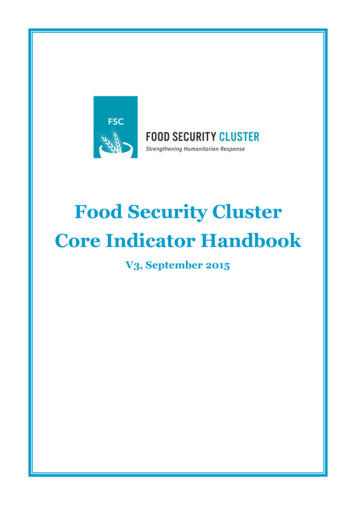
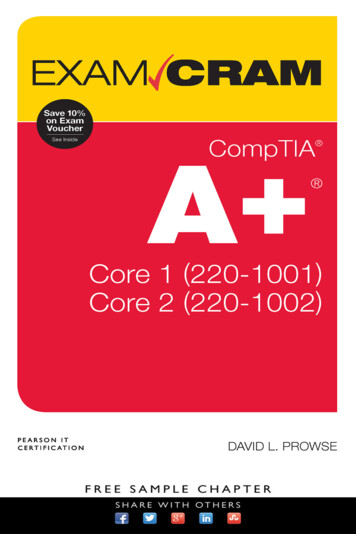
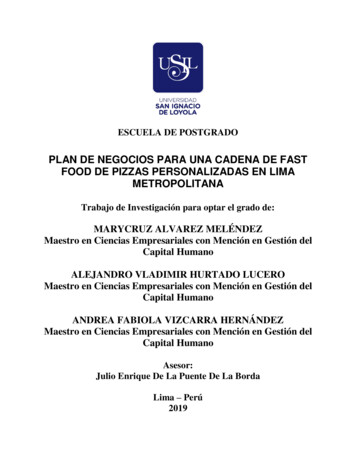


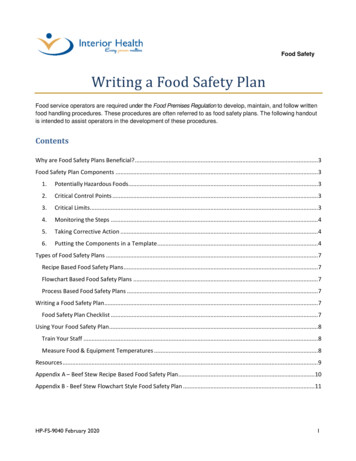
![[Week 4] Meal Plan - Food For Thought](/img/12/smart-fertility-choices-meal-plan-week-4.jpg)


